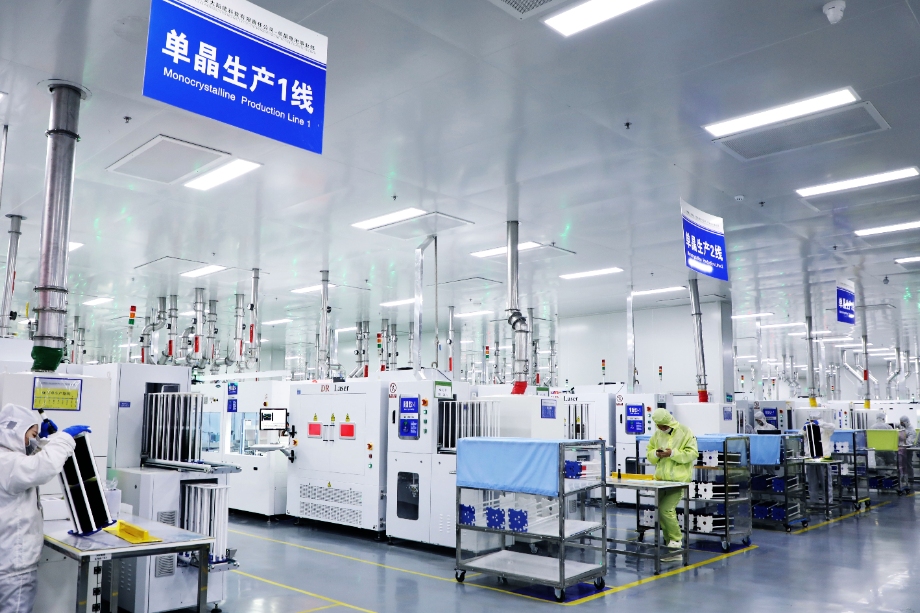What Is A Solar Cell? Everything You Need To Know!
What is a solar cell, and how can it help us power our homes and businesses? In a time when energy costs are on the rise and environmental issues continue to mount, there has been an increased drive to find clean and reasonably priced sources of energy.
While heaping interest builds for switching over to renewables, many developers simply do not understand how photovoltaic cells work.
Don't worry as this article will explain what solar cells are, how they function, the different types available, and their benefits. By the end of this article, you will know about solar cells and how they help develop a greener and better world.
So, let's get started.

Understanding Solar Cells
A solar cell is semiconductor equipment working on the principle of conversion of light into electrical energy. The most common form of solar cell is made from silicon, which is abundant and efficient in converting sun radiation into an electrical form.
This acts by the absorption of sunlight, reaching the solar cell and exciting the electrons of silicon, hence creating an electric current. When sunlight reaches the solar cell, it excites the electrons of silicon, hence creating an electric current.
This process is usually known as the photovoltaic effect. The produced electricity can be used directly or stored in batteries for later use.
How Solar Cells Work?
Solar cells work in a few steps:
1. Light Absorption: Sunlight falling on the material of the solar cell is absorbed by things like semiconductor materials, including silicon.
2. Generation of Electron-Hole Pairs: The energy from the absorbed light excites electrons, knocking them loose from their atoms. As a result, electron-hole pairs are created. In such a process, an electron may be set free to move while leaving behind a positively charged hole.
3. Electric Field Generation: Solar cells possess an inbuilt electric field generated by the doping of silicon with other materials. This electric field pushes the free electrons to one side of the cell, while the holes move in the opposite direction.
4. The flow of current: When the electrons are collected on one side and the holes on the other, an electric current is produced. Now this can be passed through the external circuit to drive electrical devices or recharge batteries.
Types of Solar Cells
There are three main types of solar cells, each with its advantages and disadvantages:
1. Monocrystalline Solar Cells
Monocrystalline solar cells are made up of one crystal structure of silicon. They have higher efficiency and last longer, often producing more units of electricity. However, they may be more expensive since the process involved in making them is quite difficult.
2. Polycrystalline Photovoltaic Cells
Polycrystalline solar cells are groups of many silicon crystals melted together. They are less effective than the monocrystalline but cheaper to produce. Currently, polycrystalline cells are highly being used at residential levels of solar installation.
3. Thin-Film Solar Cells
Thin-film solar cells are made by depositing photovoltaic material onto a substrate, usually in thin layers. They are light in weight, flexible, and, therefore, suitable for many applications in a wide range of uses. On the negative side, though they are generally less efficient and take up more space than crystalline solar cells.
Benefits of Solar Cells
Solar cells offer numerous benefits that make them an attractive energy solution:
· Renewable Energy Source
Solar energy is abundant and renewable. As long as the sun is shining, we can always collect its energy and convert it into electrical energy. This will reduce our dependence on fossil fuels and consequently reduce greenhouse gas emissions.
· Reduced Electricity Bills
The owners can produce their own electricity by installing solar panels with solar cells fixed on them. This would mean massive savings in terms of bills, especially for regions that enjoy more sunny days. Many times, units of excess electricity are sold back to the grid for more money.
· Low Maintenance Costs
Solar cells require little maintenance. Once installed, they can last for many years with little maintenance. Routine cleaning, along with periodic inspections, is generally sufficient to keep them performing correctly.
· Energy Independence
Using solar cells creates independence for individuals and society as a whole because generating their own electricity shields them from increases in the cost of energy or disruptions in its supply.
· Environmental Benefits
Solar cells produce clean energy without harmful emissions. Energy from the sun contributes to minimizing air pollution and fighting against climate change, leaving a healthy environment for our generations.
Conclusion
In summary, solar cells are a vital technology that helps convert sunlight into electricity. Understanding how they work and the benefits accruable provide a basis on which informed decisions can be made both at individual and company levels in terms of the application of solar energy.
With increased technological advances, efficiency, and accessibility lately, solar cells are bound to bring about a sustainable energy future.
If you are considering powering your home or business using solar energy, you need a reliable solar cell manufacturer.

















